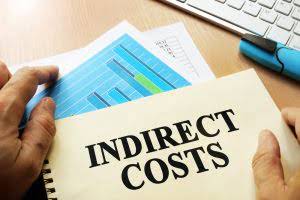Usluge:
Klijent:

That is, trades payable is the amount for which you bill your suppliers for those goods or services that you use for the ordinary course of business. You need to check the invoices thoroughly received from your accounts payable chart of accounts suppliers. The account’s unique identifier (e.g., 1010.1) is used to specify where the debit or credit is to be recorded. First, let’s look at how the chart of accounts and journal entries work together.
A chart of accounts is organized using a hierarchical structure, starting with broad categories and then breaking them down into more specific subcategories. This structure generally follows a numerical system, with each account assigned a unique number. The numbering system typically groups accounts of the same type together, making it easier to navigate https://www.bookstime.com/ and maintain the chart. An effective COA should provide an accurate and comprehensive view of a company’s financial activities across various departments and divisions. To achieve this, COA design should incorporate both hierarchical and functional perspectives, by categorizing accounts to reflect the structure and operations of the organization.
His month-end income statement could get no more detailed than that one account. At a glance, he had no idea which revenue streams were contributing to that bulk monthly number. A five-digit structured code can give enough granularity for two or three levels in a chart of accounts. Non-current liabilities are long-term debts and other liabilities, such as leases, that don’t need to be settled within one year. Whether or not its leaders are familiar with financial principles, any small business ready to grow to the next level will find a chart of accounts a necessary tool.

On the other hand, accounts receivable (A/R) is money owed to you for goods or services you provided to your customers on credit. Accounts receivable balances are considered an asset, as that number indicates how much money is owed to you by your customers. Knowing this number comes into play when digging into deeper business insights by calculating your accounts receivable turnover. An accounts payable process flow chart provides an easy way to visualize processes.
Using the same invoice date (December 15), this term means if you pay your invoice by December 24, you can take a 2% discount off of the total amount due. If you don’t pay by December 24, the full amount of the invoice is due by January 14 at the latest. Automation software can improve your accounting system, dramatically increasing your business’s speed, accuracy, and efficiency. As a result, you’ll minimize the late fees you pay to your vendors and can scale your business without increasing headcount. Unlike some foundational problems, a chart of accounts can be optimized relatively quickly.
Our partners cannot pay us to guarantee favorable reviews of their products or services. A chart of accounts will likely be as large and as complex as the company itself. An international corporation with several divisions may need thousands of accounts, whereas a small local retailer may need as few as one hundred accounts. The vast amount of your payables should be in the 0-to-30-days-old category. Since most invoices are due within 30 days, you don’t want many outstanding invoices unpaid beyond 30 days.

The chart of accounts is like the framework of shelves and storage bins in a warehouse. Think of a computer hardware company that receives a constant stream of desktops, laptops, and printers. If their warehouse is well-organized, an arriving shipment of Dell laptops will be routed to a specific bin in the Dell section of the laptop area of the warehouse. That way, when a customer orders a Dell laptop, the warehouse workers can quickly and easily retrieve it. It is quite common for financial reports to fall short of executives’ expectations. Accounting teams tend to focus on doing things the “right way” rather than asking readers of the financial statements what they want to see.